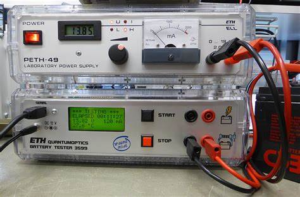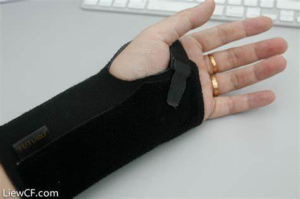Remote control (RC) helicopters have captivated enthusiasts of all ages with their ability to defy gravity and perform breathtaking aerial maneuvers. These miniature marvels of engineering offer a thrilling blend of skill, precision, and technological innovation. In this comprehensive guide, we’ll delve into the world of RC helicopters, exploring their history, types, key components, and tips for aspiring pilots.
Remote control helicopters, commonly known as RC helicopters, are miniature aircraft controlled remotely by an operator using a handheld transmitter. They offer enthusiasts the thrill of piloting a helicopter without the complexities and costs associated with full-sized aircraft. RC helicopters range from simple toy models suitable for beginners to sophisticated machines designed for advanced aerobatics and professional applications.
History and Evolution
The journey of RC helicopters began in the mid-20th century, with early models being rudimentary and challenging to control. Advancements in technology, particularly in electronics and materials, have transformed RC helicopters into the versatile and reliable machines we see today. The introduction of gyroscopic stabilization systems, brushless motors, and advanced radio transmitters has significantly improved their performance and accessibility.
Types of RC Helicopters
Toy-Grade vs. Hobby-Grade
Toy-Grade RC Helicopters: These are typically inexpensive, ready-to-fly models aimed at beginners and casual users. They offer basic controls and limited features, making them suitable for indoor use and light outdoor conditions.
Hobby-Grade RC Helicopters: Designed for enthusiasts and professionals, these models offer advanced features, customizable components, and superior performance. They require assembly and a deeper understanding of aerodynamics and mechanics.
Electric vs. Gas-Powered
Electric RC Helicopters: Powered by rechargeable batteries, these helicopters are quieter, cleaner, and easier to maintain. They are ideal for beginners and indoor flying.
Gas-Powered RC Helicopters: Utilizing internal combustion engines, these models offer longer flight times and greater power, making them suitable for advanced pilots and outdoor flying. However, they require more maintenance and are noisier.
Coaxial, Fixed-Pitch, and Collective-Pitch
Coaxial RC Helicopters: Featuring two rotors stacked on top of each other, spinning in opposite directions, coaxial helicopters offer enhanced stability and are excellent for beginners.
Fixed-Pitch RC Helicopters: These models have rotor blades with a fixed angle, simplifying control but limiting maneuverability. They are suitable for intermediate pilots.
Collective-Pitch RC Helicopters: Allowing pilots to adjust the pitch of the rotor blades, these helicopters offer advanced control and are capable of performing complex aerobatic maneuvers. They are best suited for experienced pilots.
Key Components of RC Helicopters
Transmitter and Receiver
The transmitter is the handheld device used by the pilot to send control signals to the helicopter. The receiver, located within the helicopter, interprets these signals to control various functions. Modern transmitters operate on frequencies like 2.4GHz to reduce interference and offer multiple channels for controlling different aspects of the helicopter’s flight.
The Future of RC Helicopters
The future of RC helicopters is bright, with ongoing advancements in technology and innovative designs. We can expect to see smaller, more powerful, and intelligent helicopters with features like autonomous flight, collision avoidance, and real-time telemetry. As the hobby continues to evolve, it offers endless possibilities for exploration, creativity, and sheer enjoyment.
Whether you’re a seasoned pilot or a curious beginner, the world of RC helicopters is waiting to be explored. With a little patience, practice, and a passion for flight, you can soar to new heights and experience the thrill of controlling your own aerial masterpiece.
Tips for Flying RC Helicopters
Start with a Simulator: Practice flying on a flight simulator to develop your skills and muscle memory before taking to the skies.
Choose the Right Helicopter: Start with a beginner-friendly model and gradually progress to more advanced helicopters as you gain experience.
Find a Safe Flying Area: Choose a spacious, open area away from obstacles and people.
Learn Proper Flying Techniques: Master the basic flight controls, including hovering, forward flight, backward flight, turning, and landing.
Practice Often: The secret to enhancing your abilities and boosting your self-esteem is regular practice.
Join a Flying Club: Connect with other RC enthusiasts to learn from experienced pilots and share your passion.
Be Patient and Persistent: Learning to fly RC helicopters takes time and effort. Don’t get
discouraged by crashes or setbacks.
FAQs
How do I choose the right RC helicopter for my skill level?
Selecting the appropriate RC helicopter depends on your experience:
Beginners: Opt for coaxial or fixed-pitch helicopters due to their stability and ease of control.
Intermediate Pilots: Fixed-pitch models can help refine skills before advancing.
Advanced Pilots: Collective-pitch helicopters offer the complexity and performance desired by seasoned enthusiasts.
What is the difference between electric and gas-powered RC helicopters?
Electric RC Helicopters: Powered by rechargeable batteries, they are quieter, cleaner, and require less maintenance, making them suitable for indoor and outdoor use.
Gas-Powered RC Helicopters: Utilizing internal combustion engines, they offer longer flight times and greater power but are noisier and demand more maintenance, typically favored by advanced pilots.
How do I maintain my RC helicopter?
Regular maintenance ensures optimal performance:
Pre-Flight Checks: Inspect all components, including rotor blades, servos, and the receiver, to ensure they are securely connected and functioning correctly.
Post-Flight Maintenance: Clean the helicopter to remove debris and check for any signs of wear or damage.
Battery Care: Ensure batteries are fully charged before use and store them properly to prolong their lifespan.
What are the basic controls of an RC helicopter?
Understanding the primary controls is crucial:
Throttle: Controls the rotor speed, affecting altitude.
Pitch (Elevator): Tilts the helicopter forward or backward, controlling forward and backward movement.
Roll (Aileron): Tilts the helicopter left or right, controlling lateral movement.
Yaw (Rudder): Rotates the helicopter left or right, controlling the direction the nose points.
Accordingly
Remote control helicopters offer a rewarding and engaging hobby, blending technical skill with the thrill of flight. Whether you’re a beginner or an experienced pilot, there’s a model suited to your interests and skill level. By understanding the components, learning to fly, and staying informed about the latest trends, you can fully immerse yourself in the dynamic world of RC helicopters.
To read more,Click Here.





